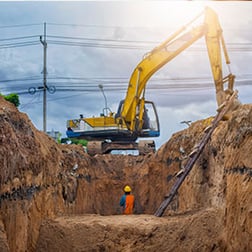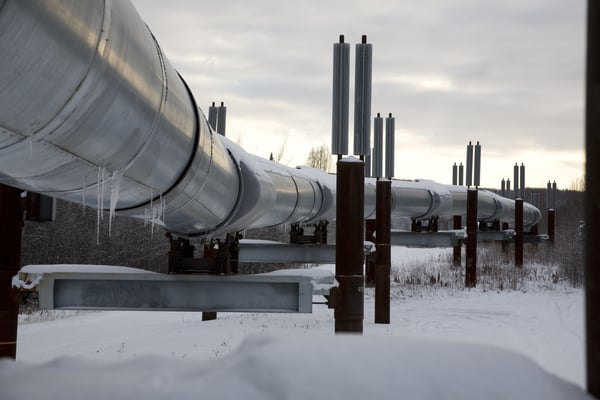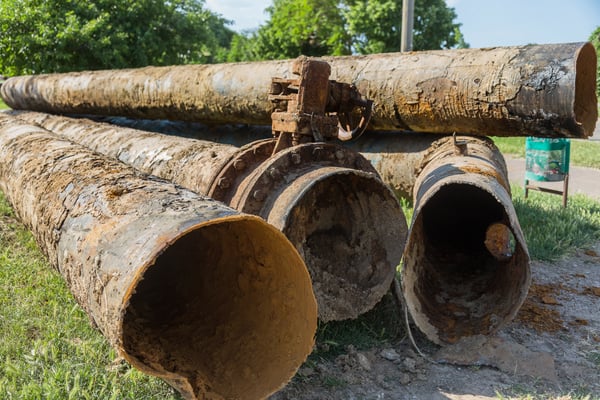One Bridge Solutions
Machine Learning in Oil and Gas in 2021: The Real Reason Pipeline Integrity Needs Machine Learning
At OneBridge, we’re unleashing more of the pipeline industry’s potential by applying machine learning in oil and gas. While this may seem like futuristic empty talk, making today’s technology work for you is not impossible.
The change begins in integrity management when teams are free to stretch their talents and aim for big goals instead of disproportionately spending time on regulatory compliance tasks.
- Will our macros catch all the actionable anomalies?
- Have we accurately assessed every threat for each asset?
- Are we keeping bulletproof records for auditors?
- Did we perform all the action items according to the assessment plan?
To be successful, it’s crucial to “keep a finger on the pulse” of integrity. Unfortunately, this is where many operators currently fail, as it’s nearly impossible to ensure complete and consistent compliance without the proper staffing and tools.
Are you prioritizing short-term gain for long-term pain?
Instead of wrangling data, shouldn’t your team of highly trained integrity specialists be putting their expertise to work, tackling more worthwhile challenges and providing more value? The answer, we believe, is a definite yes!
To help operators take charge, we developed an integrity management platform called Cognitive Integrity Management (CIM) that uses cloud computing, machine learning and data science to simplify the “management” aspect of integrity management.
Because pipeline operators must balance safety with spend, innovation is often put on hold, entrenching inefficient practices into the integrity program.
Does any of this sound familiar?
- There’s a process in place—it’s not perfect, but it works.
- New technology is incompatible with our formats, so we’re still using our old methods.
- Integrity data is sent to a third-party consultant and they tell us what to do.
Of course, every operator oversees integrity and meets the regulations. Because if you pass the PHMSA audit and satisfy the requirements of CFR 192 & 195, year-after-year, does anything really need to change? Maybe not.
However, here’s the interesting part.
When we began looking into how operators manage their risk profile, it was our turning point. Businesses were relying on pricey third-party consultants or having to beef-up their number-crunching teams to normalize and aggregate integrity data. Sure, operators were managing pipeline threats—but at what cost?
With that in mind, we realized that creating CIM wasn’t just about simplifying the work integrity already did; it was about elevating threat management to a new level.
Machine learning in oil and gas—the modern disruption to pipe integrity
Being tethered day-to-day to mundane calculations squanders employee talent, effectively handcuffing integrity engineers from doing a better job.
At OneBridge, we realized that modernizing the integrity management process was crucial. Our CIM system uses machine learning technology to liberate time and talent, in essence giving control back to pipeline operators.
Putting every last bit (and byte) of inspection data to use
CIM leverages machine learning and an integrity approach based on data science to create a complete picture of a pipeline. This lets an operator ingest and normalize a wide variety of integrity-related datasets, including ILI runs, GIS, CP surveys, NDE, and repair information.
Our platform’s vendor-agnostic capabilities and powerful cloud computing make it possible to combine years of valuable integrity information no matter the format or vendor. Once integrity data is ingested into CIM and standardized, it can be aligned and analyzed.
Aligning data for better anomaly growth insights
Corrosion threats do not grow at the same rate, which is why CIM doesn’t rely solely on straight-arm or half-life growth calculations. CIM applies pit-to-pit depth comparisons based on measured wall thickness over time—one of the most accurate (and least conservative) methods for calculating corrosion rates.
The result is a more accurate forecast of anomaly growth rates, and an easier method for identifying missed (or miscalled) anomalies.
Improving identification with intelligent algorithms
Instead of a macro with static logic, CIM supports multiple corrosion growth models with algorithms that are continually learning—the more data the program ingests, the more accurate it becomes.
First, pattern recognition is applied to identify visible features present in each dataset, such as block valves, girth welds and individual corrosion and ILI features. CIM analyzes how specific features change over time and uses a feedback loop to create a comprehensive growth model.
Additional algorithms identify conditions such as potential coating disbondment, internal localized corrosion and seam weld corrosion. These results, too, loop back into CIM’s algorithms for continuous improvement with each dataset.
Welcome to the future: applying machine learning to the oil and gas industry
It’s not about how advanced technology is, but how it works for you and how it frees your team to run a safer and more profitable pipeline. Our program—Cognitive Integrity Management—takes innovations and applies them to create specific solutions for the pipeline industry.
- Machine learning; completes self-sufficient run-coms and assessments with high confidence.
- Cloud-based; connects all the silos of integrity information across an enterprise.
- Regulatory records; automated reports (out-of-box) to prove compliance quickly.
Are you ready to release the full potential of your integrity department? To learn how CIM takes your integrity work to the next level, contact OneBridge today.


















